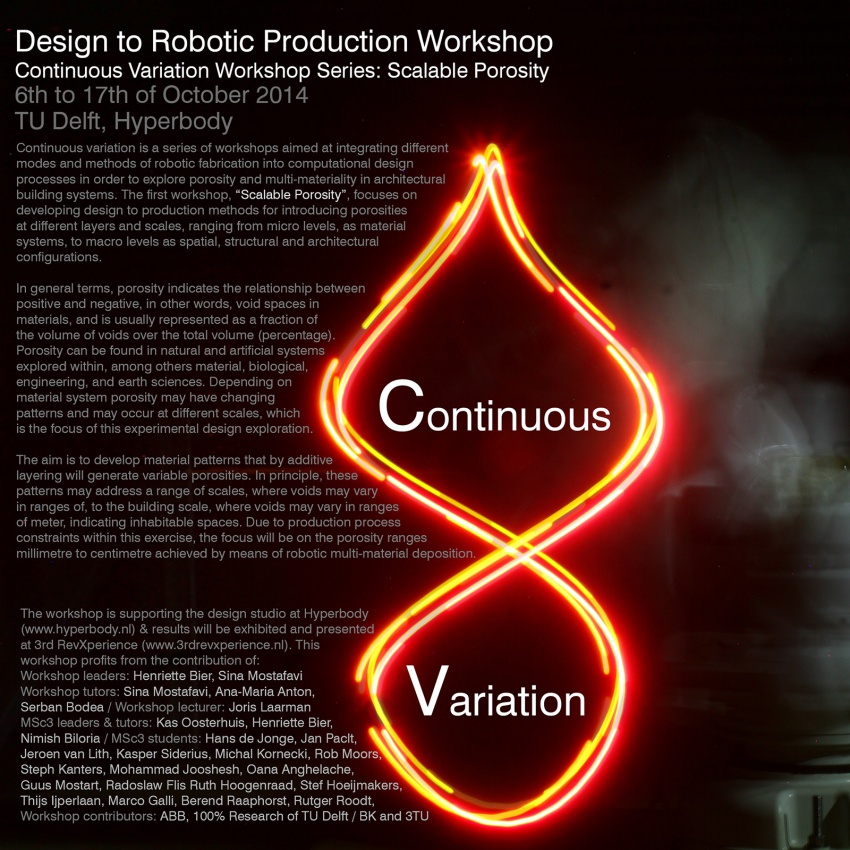Difference between revisions of "Msc3workshop:workshop01"
(→Schedule) |
(→Schedule) |
||
| Line 28: | Line 28: | ||
== Schedule == | == Schedule == | ||
| + | **'''Mon.6th of Oct.''' | ||
| − | + | **'''Tue. 7th of Oct.''' | |
| − | + | ||
| − | + | ||
| − | + | ||
| − | + | ||
| − | Tue. 7th of Oct. | + | |
| − | + | ||
| − | + | ||
| − | + | ||
| − | + | ||
| − | + | ||
| − | + | ||
| − | + | ||
| − | + | ||
| − | + | ||
| − | + | ||
| − | + | **'''Wed. 8th of Oct.''' | |
| − | + | ||
| − | Tue. 14th of Oct. | + | **'''Thu. 9th of Oct.''' |
| − | Wed. 15th of Oct. | + | |
| − | Thu. 16th of Oct. | + | **'''Fri. 10th of Oct.''' |
| − | Fri. 17th of Oct. | + | |
| + | |||
| + | '''Mon.13th of Oct.''' | ||
| + | |||
| + | '''Tue. 14th of Oct.''' | ||
| + | |||
| + | '''Wed. 15th of Oct.''' | ||
| + | |||
| + | '''Thu. 16th of Oct.''' | ||
| + | |||
| + | '''Fri. 17th of Oct.''' | ||
Revision as of 00:27, 6 October 2014
Contents
Design to Robotic Production
- Continuous Variation Workshop Series: Scalable Porosity
- 6th to 17th of October 2014
- TU Delft, Hyperbody
Introduction
Continuous variation is a series of workshops aimed at integrating different modes and methods of robotic fabrication into computational design processes in order to explore porosity and multi-materiality in architectural building systems. The first workshop, “Scalable Porosity”, focuses on developing design to production methods for introducing porosities at different layers and scales, ranging from micro levels, as material systems, to macro levels as spatial, structural and architectural configurations.
In general terms, porosity indicates the relationship between positive and negative, in other words, void spaces in materials, and is usually represented as a fraction of the volume of voids over the total volume (percentage). Porosity can be found in natural and artificial systems explored within, among others material, biological, engineering, and earth sciences. Depending on material system porosity may have changing patterns and may occur at different scales, which is the focus of this experimental design exploration.
The aim is to develop material patterns that by additive layering will generate variable porosities. In principle, these patterns may address a range of scales, where voids may vary in ranges of, to the building scale, where voids may vary in ranges of meter, indicating inhabitable spaces. Due to production process constraints within this exercise, the focus will be on the porosity ranges millimetre to centimeter achieved by means of robotic multi-material deposition.
Studio brief
Studio Deliverables
Credits and Contributions
This workshop is supporting the design studio at Hyperbody ( http://www.hyperbody.nl ) and results will be exhibited at the 3rd RevXperience ( http://www.3rdrevxperience.nl ). The workshop profits from the contribution of:
- Workshop leaders: Henriette Bier, Sina Mostafavi
- Workshop tutors: Sina Mostafavi, Ana Maria Anton, Serban Bodea
- Workshop Guest lecturer: Joris Laarman
- MSc 3 leaders and tutors: Kas Oosterhuis, Henriette Bier, Nimish Biloria
- MSc 3 students: Berend Raaphorst, Guus Mostart, Hans de Jonge, J.M. van Lith, Jan Paclt, Kasper Siderius, Marco Galli, Michal Kornecki, Mohammad Jooshesh, Oana Anghelache, Perry Low, Radoslaw Flis, Rob Wilhelmus Christiaan Moors, Rutger Roodt, Ruth Hoogenraad, Stef Hoeijmakers, Steph Kanters, Thijs IJperlaan
- Workshop contributors: ABB, 100% Research Office/BK, 3TU
Schedule
- Mon.6th of Oct.
- Tue. 7th of Oct.
- Wed. 8th of Oct.
- Thu. 9th of Oct.
- Fri. 10th of Oct.
Mon.13th of Oct.
Tue. 14th of Oct.
Wed. 15th of Oct.
Thu. 16th of Oct.
Fri. 17th of Oct.
